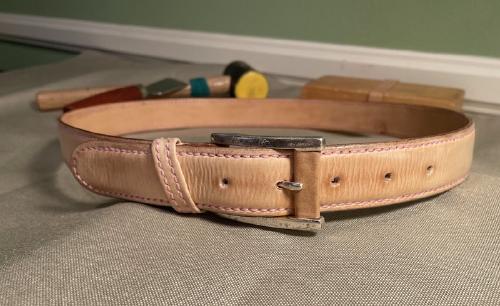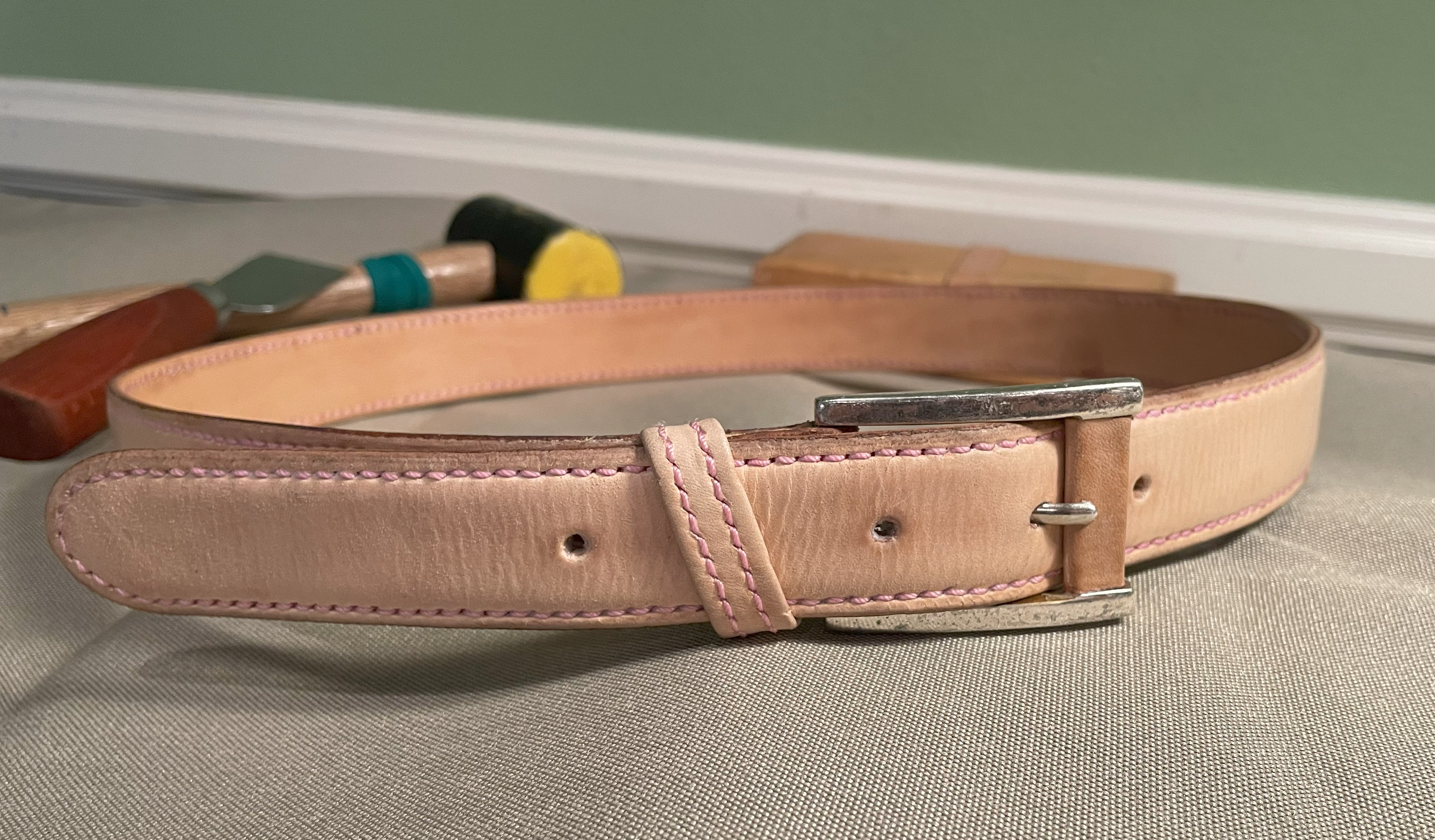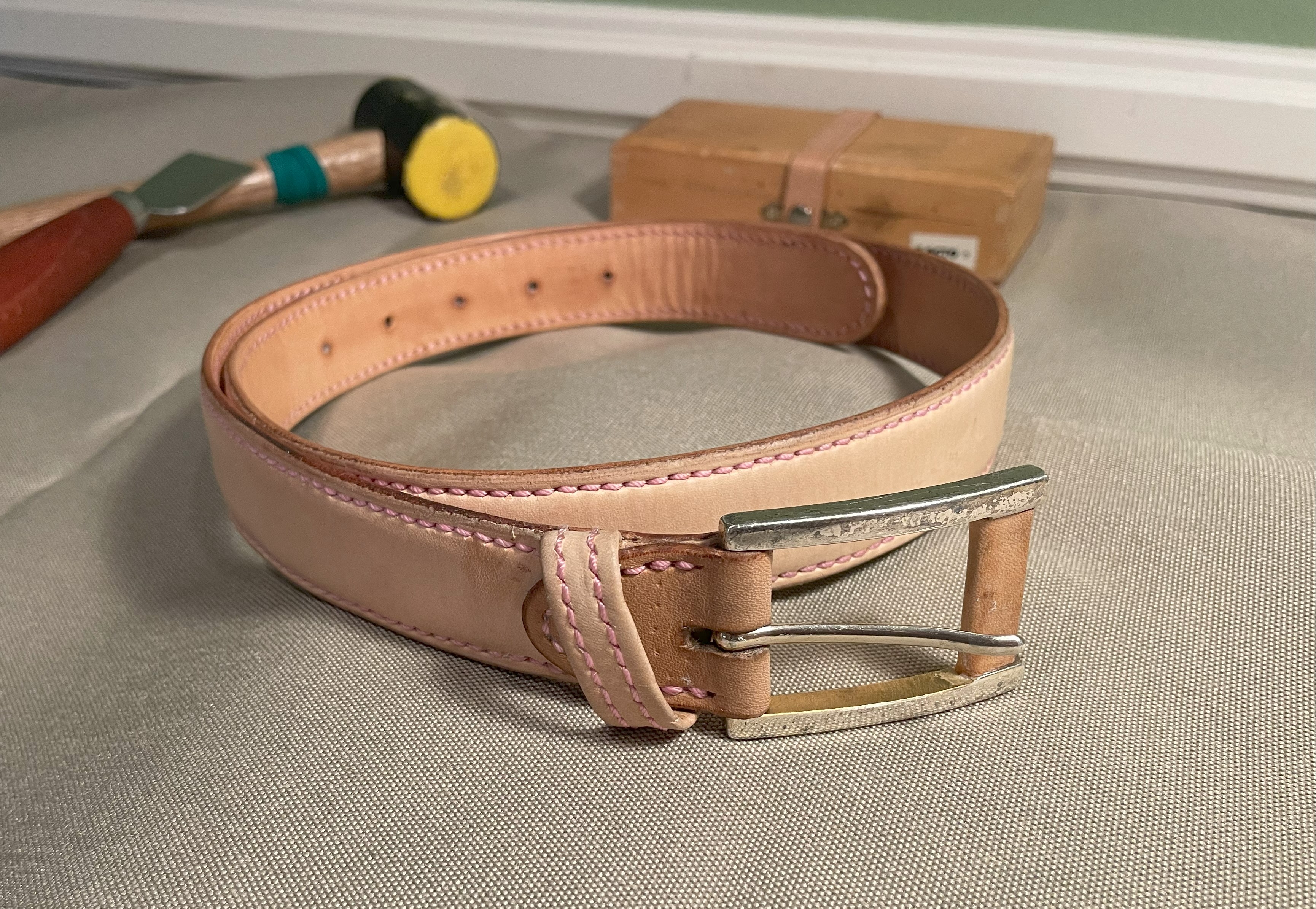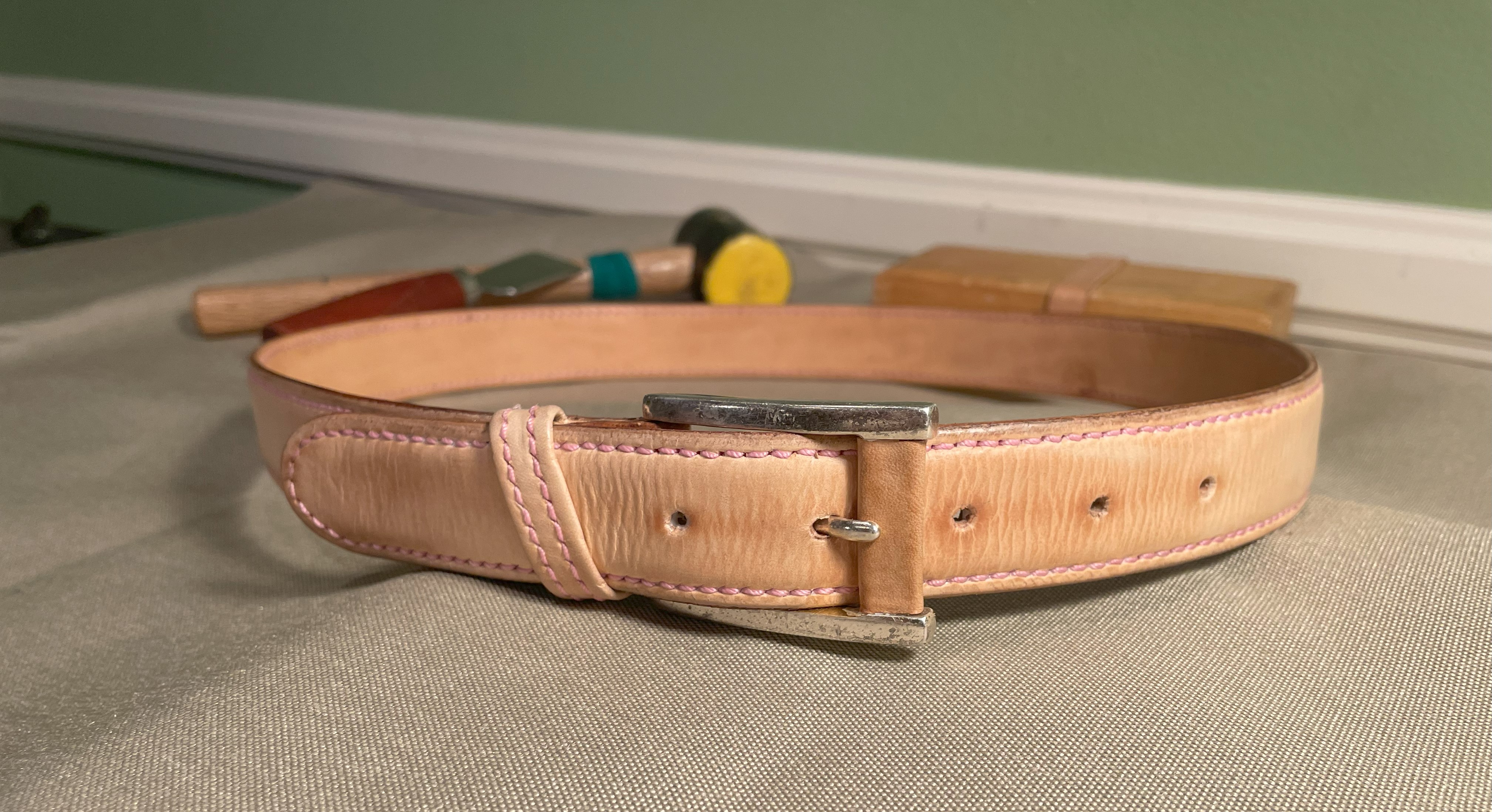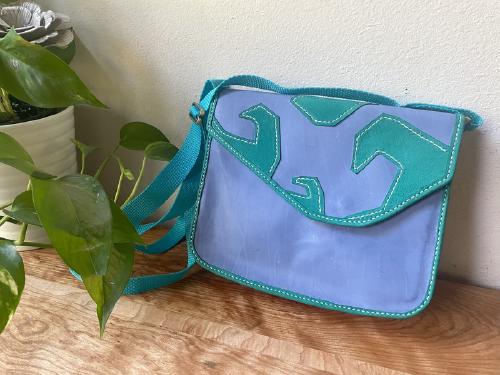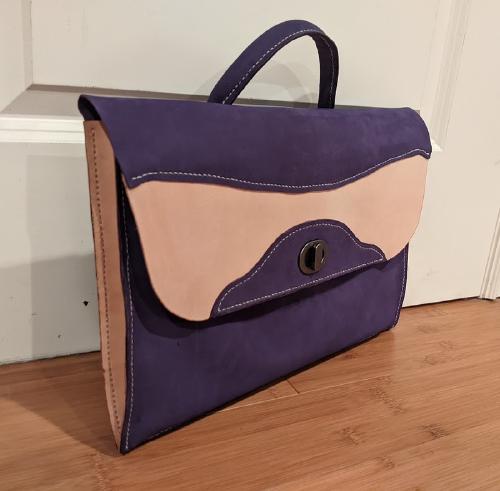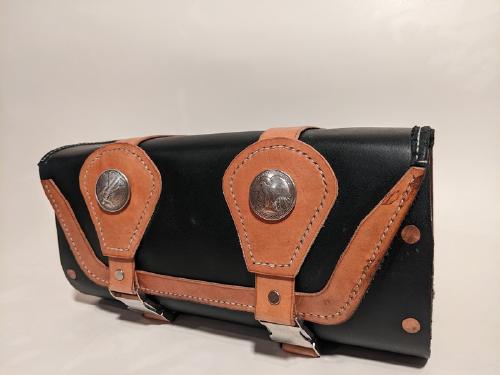Description
The belt which I used daily finally gave way to large tears, so I decided it was time to learn how to make my own.
The belt is made from full grain veg tan on front and back for extra longevity. The belt buckle is salvaged from a 70s style belt from Goodwill.
New Techniques and Features
I wanted to replicate the raised belt which I previously wore. Upon further research I learned that this is typically achived with an extra stip of leather, usually-split grain scraps or another cheap material. Using the split-grain is convinient as it is the byproduct of splitting the belt strip to a thinner thickness, but since I don’t have a leather splitter to make this easy I decided to spend the extra dollar and use another full grain leather stip to make the raised strip.
Intially I cut the inner strip with too much excess causing an awkward gap between the stich line and the raised level of the belt. I learned the strip needed to be cut more more precisely than I had imagined to create the seamless look I wanted.
Next time I would choose a thicker inner stip to make this look more pronounced. I also would like to cut the stip to be concentric with the rounded front of the belt as this is often the most noticed and elegant part of the belt.
Why Leather Working?
I was introduced to leather working years ago when I visited Tandy Leather with my dad. He had previously stumbled upon it and thought it was a cool store. I’ve been designing my own leather goods and crafting them by hand ever since.
Objectives for Each Project: The majority of my projects are gifts for friends and family during the holidays. Each time I start a new project I try to design something which fits the person’s functional and aesthetic needs. Finally I implement a new skill or technique I’ve recently learned about. This process allows me to improve my craftsmanship with every project I complete, which is evident in my portfolio.
Every project starts with an idea and a few sketches. Decide on a color scheme and design a mock model in cardstock for particularly complex designs. Then these cardstock templates can be cut used to cut out the leather peices and saved for future itterations or replicas of projects.
